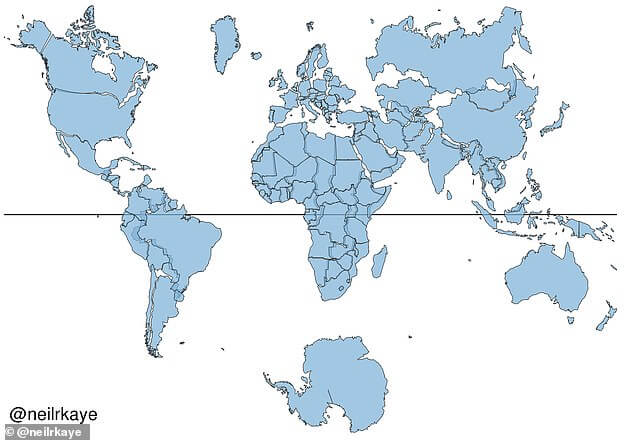Our maps are wrong: how the world actually looks
If you look at the map of the world, you will probably think that North America and Russia are bigger than Africa. However, in fact, Africa is three times larger than North America and significantly larger than Russia.

Photo: depositphotos.com
This strange distortion was investigated by climate data scientists from the National Meteorological Service of the United Kingdom (Meteorological Bureau, Met Office), which created a two-dimensional map showing how the world really looks like. It turned out that many countries - including Russia, Canada and Greenland - are not as large as we think. The distortion originates from the Mercator projection, a map that is most commonly found in classes and textbooks. It was created in 1596 to help sailors navigate the sea.

What is wrong with the Mercator card?
Africa is about 14 times larger than Greenland, and yet on the map they are almost the same size. Brazil is more than 5 times Alaska, but Alaska is more than Brazil on the map. The map shows that the Scandinavian countries are larger than India, while in fact India is 3 times the size of the Scandinavian countries combined. Although Europe looks bigger on this map than North America, the opposite is true. Russia is also not as large as it is depicted - in fact, Africa is larger than Russia.

Photo: © Wikimedia
The biggest problem with creating an accurate map is that it is impossible to depict the reality of the spherical world on a flat map - a problem that has been a concern for cartographers for centuries. As a result, the forms of world maps, as a rule, were diverse - from hearts to cones. But diversity gradually disappeared with the advent of one model proposed by Gerard Mercator in 1596. The projection of the Mercator shows the correct forms of land, but at the cost of distorting their size in favor of land in the north.
Gerard Mercator (5 March 1512 - 2 December 1594) is a Flemish cartographer known for creating a world map based on a projection that shows sailing routes in the form of straight lines. Although this is what he is best known for, Mercator was not just a geographer. He also studied theology, philosophy, history, mathematics and magnetism. Mercator was also an engraver and calligrapher, and even made globes and scientific tools. Unlike other scientists, geographers of the time, he traveled a little. Instead, his knowledge of geography was based on his library, which has more than a thousand books and maps. In 1580's, he began publishing his atlas, which he named after a giant from Greek mythology, holding the world on his shoulders. He suffered a series of strokes in the early 1590s, which left him partially paralyzed, and almost blind. The final blow was the cause of his death in 1594, at the age of 82.
Neil Kay, climate data scientist at Met Office, has created an accurate map of the world, which shows that countries in the Northern Hemisphere are much smaller than people usually think. To do this, he entered data on the size of each country in Ggplot, which is a visualization package for statistical programming. He then created a map using the projection sterographic. This is a display function that projects the sphere onto a plane. After that, Kay conducted a manual adjustment, adjusting the size of countries that are located closer to the poles. Thus, according to Kay, it is impossible to place all forms again on the sphere after they have already been laid on the plane.
Read also on ForumDaily:
Seven countries in different parts of the world for a potential expat
Top US cities for lovers of modern architecture
7 simple ways to protect the environment and save
Subscribe to ForumDaily on Google NewsDo you want more important and interesting news about life in the USA and immigration to America? — support us donate! Also subscribe to our page Facebook. Select the “Priority in display” option and read us first. Also, don't forget to subscribe to our РєР ° РЅР ° Р »РІ Telegram and Instagram- there is a lot of interesting things there. And join thousands of readers ForumDaily New York — there you will find a lot of interesting and positive information about life in the metropolis.











